 Last month I wrote an article for Doors & Hardware about the changes that health care facilities should be aware of now that the 2012 edition of NFPA 101 – Life Safety Code has been adopted by CMS – Centers for Medicare / Medicaid Services. In that article, I mentioned the requirements for annual fire door inspections, which were not a part of the previously-adopted edition of NFPA 101, but are part of the 2012 edition.
Last month I wrote an article for Doors & Hardware about the changes that health care facilities should be aware of now that the 2012 edition of NFPA 101 – Life Safety Code has been adopted by CMS – Centers for Medicare / Medicaid Services. In that article, I mentioned the requirements for annual fire door inspections, which were not a part of the previously-adopted edition of NFPA 101, but are part of the 2012 edition.
Several people asked if I was sure that the inspection requirements would be enforced. Generally, when a new code is adopted, I don’t question whether a change will be enforced. For example, when the IBC requirement for panic hardware changed from doors serving Assembly & Educational occupancies with 100 people or more to Assembly & Educational occupancies with 50 people or more, we just started specifying and supplying panic hardware on rooms half the size of the rooms that required panic hardware in the past. Whether it is specifically enforced or not is irrelevant – if the code requires it, we do it. Of course, a state or local jurisdiction could modify the model codes and require / allow something different, but whatever the adopted code requires is what should be done.
The reason people are questioning whether annual fire door assembly inspections will be enforced by CMS, the Joint Commission, and other AHJs responsible for health care facilities, is because there has been relatively low enforcement of these inspection requirements for other types of facilities. Why? I’m still scratching my head about that one. Yes – it costs money to have an inspection done, and the inspection could uncover necessary repairs which also cost money. But the codes and standards have always required fire door assemblies to be kept in code-compliant condition. Failure to do so could result in fines or increased liability if a fire occurs.
Will fire door inspections be enforced for health care facilities? NFPA 101-2012 clearly requires them, but it seems that more proof was needed. So, I asked the Joint Commission, and I was told that as of July 5th, 2016, CMS will require compliance with the 2012 edition of NFPA 101, and because the Joint Commission standards are aligned with CMS, the 2012 edition of NFPA 101 will be utilized – including the requirements for annual fire door inspections.
This was also stated in an article by Kristin Bigda of NFPA, which appeared in NFPA Journal:
“Healthcare facilities have a lot of doors. Many doors, such as those protecting exit stairs, horizontal exits, and hazardous areas, are required to be fire-protection rated. With the anticipated adoption of the 2012 edition of NFPA 101®, Life Safety Code®, by The Centers for Medicare and Medicaid Services (CMS), many healthcare facilities will have to add fire-protection rated doors to their list of building systems that require periodic inspection and testing.”
I think that should clear it up. Health care facilities that are subject to the CMS requirements WILL need to conduct fire door inspections annually, document the findings, and make needed repairs “without delay.” I know that some facilities have been preparing for this and have conducted inspections for several years. I’d love to hear some stories from the field about how facilities have tackled this. Are the inspections conducted by a consultant, or in-house staff? What training program is being utilized? How are the findings documented? What are the biggest challenges?
WWYD?
There’s more information about fire doors on the fire door page of this site, including a laminated card that is available free of charge (the front is shown above). Just email me or ask your local Allegion rep if you’d like some.
You need to login or register to bookmark/favorite this content.

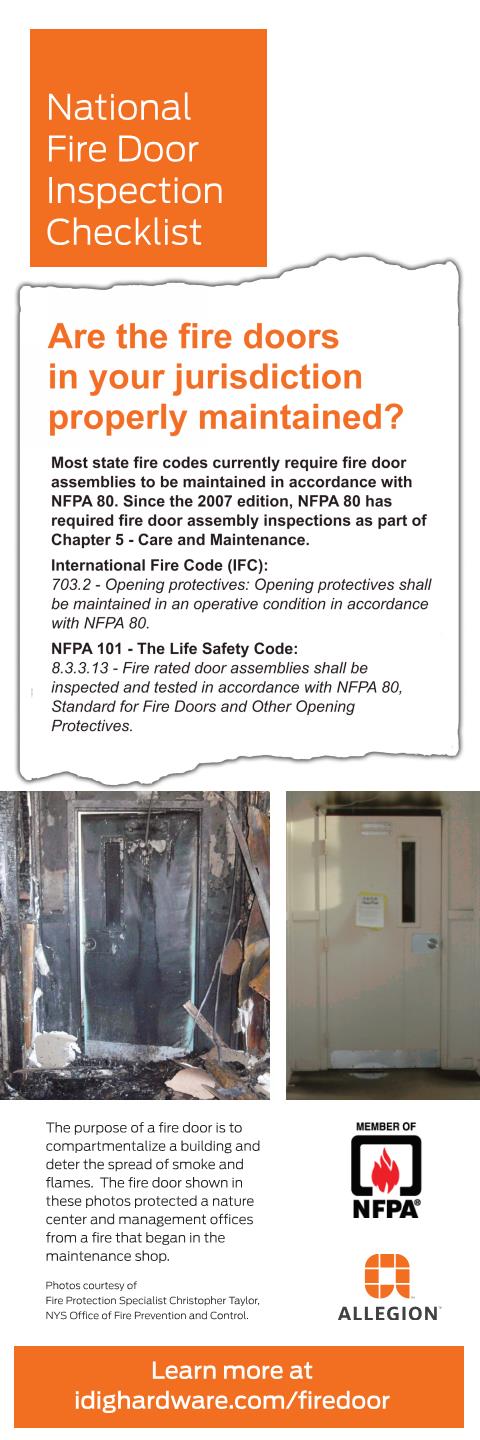

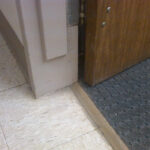
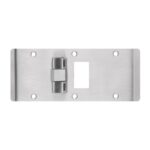
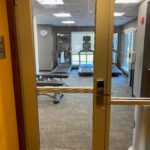
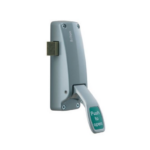
My experience at a previous employer….the facilities that we dealt with were either conducting their own inspections, to prepare for TJC reviews, or they had instituted a system for regular reviews. One client had a facilities staff that was very proactive. Matter of fact, the database system that they devised served as a source or a model for other local facilities. Every door, frame, etc., was barcoded. If you scanned it, it would tell you what it was, when it was installed, inspected…the works. They were able to produce a report and turn it over to the AHJ conducting the inspection.
Nice!
I believe that Brad Keyes published similar information with a check list of what to inspect.
Thanks Joel. Brad did write a post on this recently: http://keyeslifesafety.com/new-fire-door-inspection-requirements/ His website is a great resource for life safety requirements for health care. In fact, he included my fire door inspection checklist in his book! 😀
– Lori
we have only one nursing home in our AHJ. Not mine to inspect, but have been in it.
When we are doing our annual inspection we look at the doors, condtion, operation, and if they have a problem, write to have them repaired.
As far as requireing some one to do it, or if the facility has them checked, I cannot answer that question.
Seems like the feds should have that on thier check list to require some type of documentation???
My biggest problem is getting people to understand what is a firedoor, not just the barrier doors that close in a code red.
I respect Mr. Keyes and his firm. They have a lot of healthcare knowledge.
But doors aren’t one of his strengths. I feel his referenced article could be dangerous and misleading. Let me state my case…
In his article, Mr. Keyes outlines the 12-13 MINIMUM inspection items identified in NFPA 80. He claims “anyone can do the inspections”. I’m going to take issue with this. Mr. Keyes doesn’t mention anything about fixing any of the problems – correctly. The inspection (and report) is intended to ensure the doors function as intended. What are the holes fixed with, how large are (were) the holes, what kind of screws are used to secure the hinges to the door/frame, is that fire-rated corridor door with the fire exit hardware missing the bottom latch- is it really an LBR device or did maintenance just remove the lower rod due to ADA requirements, thus voiding the rating. All of these are items that must be considered to judge whether a fire door meets requirements. You (Lori) and I both know the tiniest detail can cause failure of the door. I’ve been to the UL lab for a UL 10C test and I know how attention to detail is key. If a gap is too large or a piece of hardware is not installed properly, the result is a fire door failure.
Mr. Keyes states anyone can perform the inspections. Really? Why don’t we send the receptionist around to take a look at the doors and mark the check boxes on his form. NFPA 80 and NFPA 101 both state the person doing the review must be “knowledgeable and understanding of the operating components. Can ANYONE meet this requirement? The report is to be signed for the AHJ and it is up to the AHJ to accept the report. In healthcare, the AHJ is CMS or TJC. Who are they going to accept as a knowledgeable individual? The receptionist? the maintenance supervisor? Or someone with credentials? Perhaps a P.E., an FDAI, or someone with AAAADM credentials (see below). Healthcare needs to determine “WHO” is “knowledgeable” in the eyes of CMS or TJC.
Last, fire door inspections are defined in NFPA 80 and are just a tip of the door inspection “iceberg”. The 2012 LSC defines inspecting more than just fire doors. Section 7-2-1-15, titled ‘Inspection of Door Openings’ defines the doors to be inspected as 1) door leaves with panic or fire exit hardware, 2) door assemblies in exit enclosures (i.e. exit doors), 3) electrically controlled egress doors, and 4) door assemblies with special locking arrangements. Among the list of inspection items (not mentioned by Mr. Keyes) are items defined in sub-paragraph 7-2-1-15-7. The list includes such items as open floor space, forces required to move doors, latching and locking devices, door closers adjusted properly, projection of door leaves doesn’t exceed X, powered door openings operate properly, signage meets requirements, special locking arrangements function properly, security devices do not impede progress, etc.
Jumping back to the start of the section, sub-paragraph 7-2-1-15-2 defines the inspection of fire doors per NFPA 80 …AND the inspection of smoke doors per NFPA 105.
If CMS, TJC, and other accrediting agencies are REALLY serious about upholding the requirements of NFPA 101 -2012, and people are inspecting according to Mr. Keyes article, I feel there are going to be a lot of surprised people in healthcare (and a spike in Life Safety violations).
David